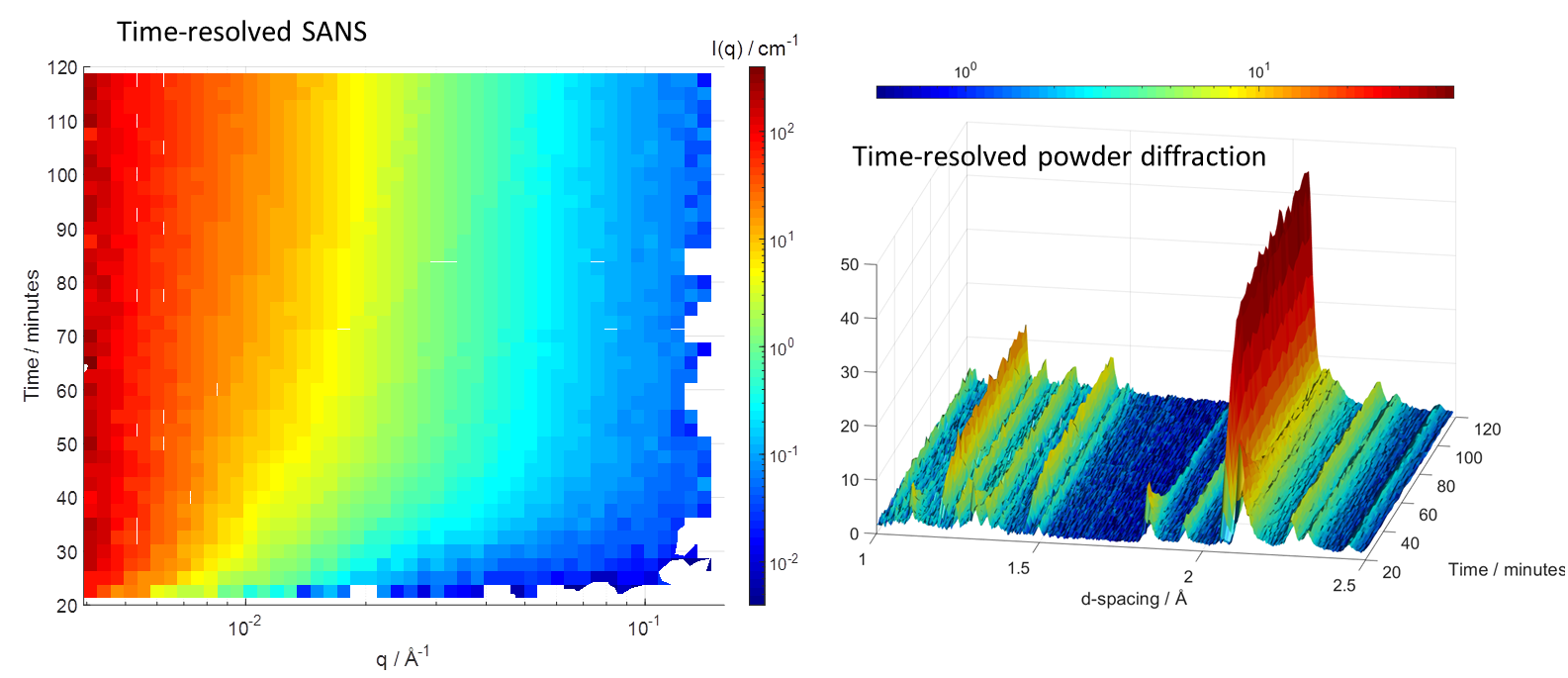Technical Summary
Larmor is capable of operating in a number of different measurement setups. Currently, the SANS and SESANS mode are the primary operating modes. In order to swap between these configurations it takes of the order of 4 to 6 hours after which the instrument must then be checked and calibrated. It is hoped that this time will be reduced in the future to a few hours. As a result, mode switching within an experiment is not encouraged although it is possible.
In conventional SANS mode
Incident Wavelength Range
| 0.9 - 13.0 Å or 0.5 - 12.5Å unpolarised
1.7 - ~10.0Å polarised with Polariser 1
3.0 - 13.0Å polarised with Polariser 2
|
Momentum transfer
| 0.003 - 0.7Å-1 with the beam centred in the middle of the detector
0.003 - 1.0Å-1 with the beam offset at 2°
|
In SESANS mode
Incident Wavelength Range
| 1.7 - ~10.0Å polarised with Polariser 1
3.0 - 13.0Å polarised with Polariser 2
|
Possible Poleshoe Angles
| 20 - 90°
|
Operating Frequencies and fields
| 0.5 MHz - 17.14mT
1.0MHz - 34.28mT
|
Notes for proposers:
For both SANS and SESANS measurements users are expected to provide their own sample cuvettes/cans. But where necessary, some quartz cuvettes are available for loan. Please discuss with the instrument scientists. ISIS does not endorse any particular manufacturer of quartz cuvettes but both Hellma (stock codes: 110, 120 & 404; material codes: QS/QX) and Optiglass (stock codes: 21 & 32; material code: Q) manufacture suitable products.
If the ratio of H:D present in a hydrogenous sample is more than 50% H the sample path-length (thickness) should ideally not exceed 1 mm (or absorbtion, incoherent and inelastic scattering effects may manifest themselves). Otherwise path-lengths of 2 mm are acceptable. In predominantly deuterated and/or very dilute samples 5 mm path-lengths can be used. Exceptionally 10 mm path-lengths may be necessary.
The volumes required for different 1 mm path-length cells are approximately (minimum in brackets):
10 mm wide rectangular - 0.25 ml (0.15 ml)
20 mm wide rectangular - 0.55 ml (0.40 ml)
disc-shaped ('banjo') - 0.25 ml (0.25 ml)
The advantage of disc-shaped cells and the 20 mm wide rectangular cells is that a larger neutron beam can be used, increasing the count rate on the sample, where appropriate at the cost a greater minimum q and potentially background.
SANS with wide angle diffraction
The collaboration between ISIS and TU-Delft has recently delivered a new high angle bank for Larmor which has now been used for the first time. The figure below shows preliminary results of a simultaneous SANS and diffraction study of in-situ precipitate growth that is coupled to the phase transformation kinetics in steel by the group of Erik Offerman (TU-Delft). The wide angle detector may be installed on one side of the sample at any scattering angle between 45° and 135°. The detector is relatively small covering ~23° in the equatorial plane at 1.5m from the sample. Because of the small solid angle coverage and lack of permanent installation the detector should only be considered suitable for monitoring relative diffraction peak intensities. It should not be considered as a means to measure quantitative wide angle scattering where very accurate absolute calibration is required.
If you wish to use the wide angle detector bank please consult the Larmor instrument scientists first for advice.

